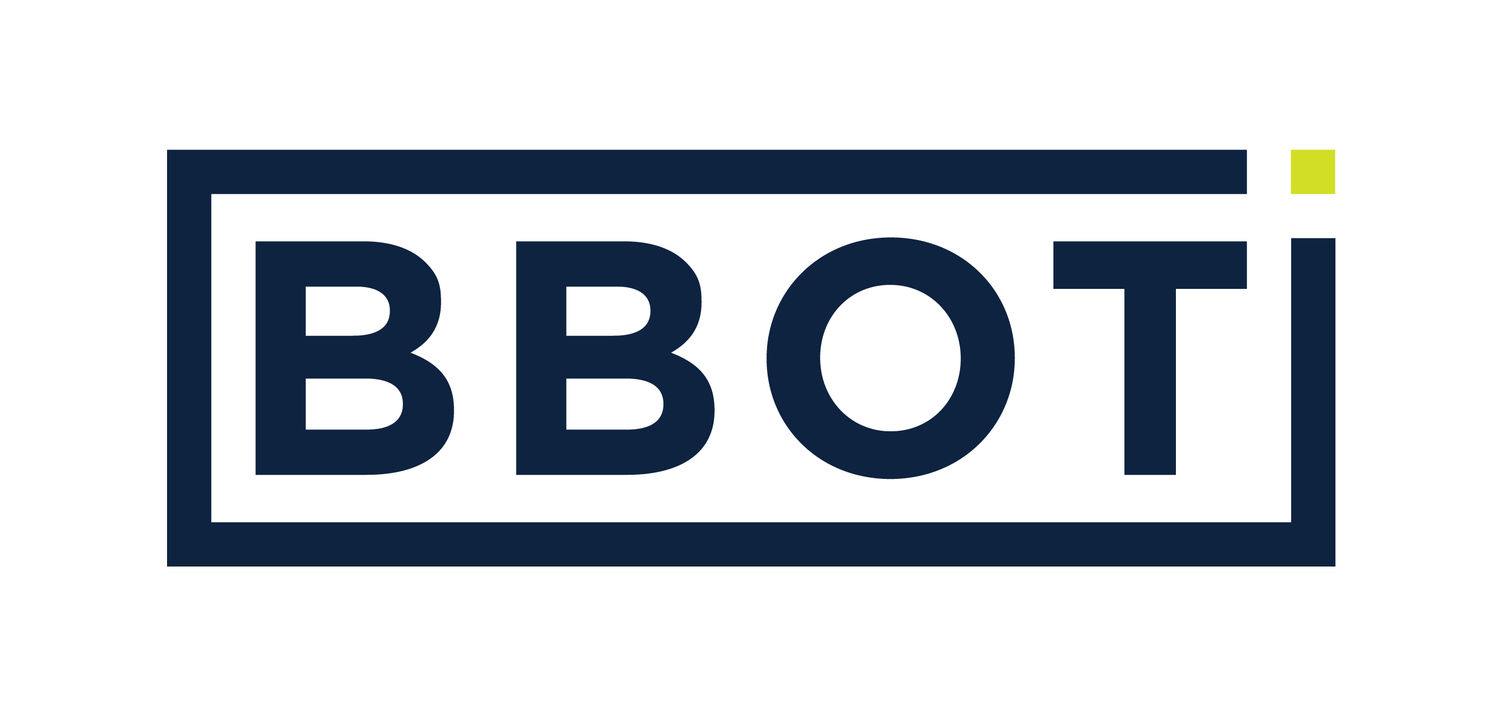预约演示
更新于:2025-09-02
BBO-8520
更新于:2025-09-02
概要
基本信息
药物类型 小分子化药 |
别名 BBO8520、BBP-8520、BBP8520 |
作用方式 抑制剂 |
作用机制 KRAS G12C抑制剂(KRAS G12C突变抑制剂) |
非在研适应症- |
非在研机构- |
最高研发阶段临床1期 |
首次获批日期- |
最高研发阶段(中国)- |
特殊审评快速通道 (美国) |
登录后查看时间轴
结构/序列
分子式C35H33F6N7O2S |
InChIKeyRIVFEDYNLHJKEZ-VHJOERAISA-N |
CAS号2892613-01-1 |
关联
1
项与 BBO-8520 相关的临床试验NCT06343402
A Phase 1a/1b Open-Label Study Evaluating the Safety, Tolerability, Pharmacokinetics, and Efficacy of BBO-8520 in Subjects With Advanced KRASG12C Mutant Non-Small Cell Lung Cancer - The ONKORAS-101 Study
A first in human study to evaluate the safety and preliminary antitumor activity of BBO-8520, a KRAS G12C (ON and OFF) inhibitor, as a single agent and in combination with pembrolizumab in subjects with locally advanced and unresectable or metastatic non-small cell lung cancer with a KRAS (Kirsten rat sarcoma) G12C mutation.
开始日期2024-05-22 |
申办/合作机构- |
100 项与 BBO-8520 相关的临床结果
登录后查看更多信息
100 项与 BBO-8520 相关的转化医学
登录后查看更多信息
100 项与 BBO-8520 相关的专利(医药)
登录后查看更多信息
2
项与 BBO-8520 相关的文献(医药)2025-03-03·Cancer Discovery
Discovery of BBO-8520, a First-In-Class Direct and Covalent Dual Inhibitor of GTP-Bound (ON) and GDP-Bound (OFF) KRASG12C
Article
作者: Sinkevicius, Kerstin W. ; Mehdizadeh, Sadaf ; Abreu Blanco, Maria ; Esposito, Dominic ; Larsen, Erik K. ; Simanshu, Dhirendra K. ; Wallace, Eli ; Dyba, Marcin ; Wong, Kwok-Kin ; Ranieri, Michela ; Denson, John-Paul ; Stephen, Andrew G. ; Jeknic, Stevan ; Yang, Yue ; Alexander, Patrick A. ; Zhang, Zuhui ; Nissley, Dwight V. ; Turner, David M. ; Beltran, Pedro J. ; Meynardie, Mary ; Maciag, Anna E. ; Chan, Albert H. ; Wang, Keshi ; Smith, Brian P. ; Setoodeh, Saman ; Singh, Devansh ; Rabara, Dana ; Xu, Rui ; Lin, Ken ; McCormick, Frank ; Ju, Jin Hyun ; Sharma, Alok K. ; Stice, James P. ; Lightstone, Felice C. ; Wang, Bin
Abstract:
Approved inhibitors of KRASG12C prevent oncogenic activation by sequestering the inactive, GDP-bound (OFF) form rather than directly binding and inhibiting the active, GTP-bound (ON) form. This approach provides no direct target coverage of the active protein. Expectedly, adaptive resistance to KRASG12C (OFF)-only inhibitors is observed in association with increased expression and activity of KRASG12C(ON). To provide optimal KRASG12C target coverage, we have developed BBO-8520, a first-in-class, direct dual inhibitor of KRASG12C(ON) and (OFF) forms. BBO-8520 binds in the Switch-II/Helix3 pocket, covalently modifies the target cysteine, and disables effector binding to KRASG12C(ON). BBO-8520 exhibits potent signaling inhibition in growth factor–activated states, in which current (OFF)-only inhibitors demonstrate little measurable activity. In vivo, BBO-8520 demonstrates rapid target engagement and inhibition of signaling, resulting in durable tumor regression in multiple models, including those resistant to KRASG12C(OFF)-only inhibitors. BBO-8520 is in phase 1 clinical trials in patients with KRASG12C non–small cell lung cancer.Significance: BBO-8520 is a first-in-class direct, small molecule covalent dual inhibitor that engages KRASG12C in the active (ON) and inactive (OFF) conformations. BBO-8520 represents a novel mechanism of action that allows for optimal target coverage and delays the emergence of adaptive resistance seen with (OFF)-only inhibitors in the clinic.See related commentary by Zhou and Westover, p. 455
2025-03-03·Cancer Discovery
Beyond First-Generation KRAS Inhibitors: BBO-8520 Tests the Dual Mechanism Hypothesis
Article
作者: Westover, Kenneth D. ; Zhou, Zhiwei
Summary::
This issue highlights the development of a first-in-class small-molecule covalent KRASG12C inhibitor, BBO-8520, which targets both the active (ON) and inactive (OFF) states of KRAS. This dual-state targeting offers a significant opportunity to overcome the resistance mechanisms that have limited the efficacy of first-generation KRAS inhibitors and addresses critical challenges in KRAS-targeted therapy.See related article by Maciag et al., p. 578
43
项与 BBO-8520 相关的新闻(医药)2025-08-15
近日,BridgeBio Pharma(BBIO)旗下分拆的子公司BridgeBio Oncology Therapeutics(BBOT)通过SPAC正式在纳斯达克交易所上市。
这是BridgeBio分拆的第四家子公司。
SPAC合并上市
BridgeBio Oncology Therapeutics是一家专注于RAS和PI3Kα的新一代小分子疗法开发的Biotech公司,2024年5月从BridgeBio Pharma分拆出来,成立的同时,BBOT宣布完成2亿美元融资。
今年2月,BBOT与SPAC公司Helix Acquisition Corp II达成最终业务合并协议,这笔交易预计将为BBOT带来4.5亿美元的资金。
目前,BBOT有三款在研管线,目前都已推进到临床阶段。
BBO-8520是一种口服KRAS G12C直接抑制剂,目前正在进行Ⅰ期临床ONKORAS-101试验,针对KRASG12C突变型非小细胞肺癌。今年1月,BBO-8520还获FDA授予快速通道资格。
BBO-10203是一种口服PI3Kα/RAS阻断剂,目前,BBO-10203正在进行Ⅰ期BREAKER-101临床试验,用于治疗局部晚期且不可切除或转移性HER2+乳腺癌、HR+/HER2-癌症乳腺癌、KRAS突变型结直肠癌以及KRAS突变型非小细胞肺癌。
BBO-11818是一种泛KRAS抑制剂,目前也处于Ⅰ期剂量剂量爬坡阶段,针对携带KRAS G12D、G12V、G12C等突变的晚期/转移性实体瘤。
分拆第四家
BridgeBio Pharma成立于2015年,由美籍华裔经济学家罗闻全(Andrew Wen-Chuan Lo)创办。2019年,BridgeBio Pharma在纳斯达克上市,以3.485亿美元创下该年度最大规模的Biotech IPO。
不同于传统的制药公司,BridgeBio以一种名为“hub-and-spoke”的模式运营,在这个模式中,大型制药公司被划分为一个中心母公司和多个独立的子公司,每个子公司专注于各自的研发管线/疾病领域,母公司则是为子公司提供集中化的资源、资金以及管理支持。
通过这种经营模式,BridgeBio旗下曾拥有超过25家子公司/衍生公司。
目前,BridgeBio仍控股着(超50%)旗下绝大多数子公司,目前分拆出(包括已出售)的总共有4家,其中两家都是去年分拆。
除了BBOT之外,去年8月,BridgeBio还分拆出一家名为GondolaBio的新公司。
Eidos Therapeutics则是曾在2019年被BridgeBio分拆上市(EIDX),但后又被BridgeBio重新收购并私有化,现为其100%控股子公司。
MyoKardia则是已完成退出,2020年,MyoKardia被以131亿美元出售给Bristol-Myers Squibb,现不隶属BridgeBio。
就融资情况来看,最近被分拆出去的公司都受到了一定的资本青睐,GondolaBio一成立便暂获了3亿美元的融资,投资人包括红杉资本等知名投资机构。
并购临床1期IPO临床2期
2025-08-02
·精准药物
01KRAS突变的生物学特征 No.1KRAS信号激活与突变机制◆ RAS基因家族:RAS基因家族包括HRAS、KRAS、NRAS,均为癌基因,其中KRAS是癌症中突变最频繁的亚型(占RAS突变的81%),其次为NRAS(15%)和HRAS(4%)。◆ KRAS蛋白:是KRAS基因的产物,属于小GTP酶家族,在活性GTP结合状态(KRAS(ON))和失活GDP结合状态(KRAS(OFF))之间动态转换,调控细胞增殖、生存等信号。图1 KRAS GTPase蛋白序列和结构◆ KRAS激活:上游RTK(如EGFR)通过SOS1促进KRAS-GTP形成,下游激活RAF-MEK-ERK和PI3K-AKT等通路,驱动肿瘤发生。图2 KRAS的激活状态及其对信号通路的影响◆ KRAS突变:KRAS突变占人类癌症的20%以上,通过破坏GTP结合口袋的构象,导致GTP酶活性降低,维持KRAS持续激活状态,驱动肿瘤生长。 No.2KRAS突变类型与表达调控◆ KRAS突变类型与肿瘤分布:KRAS突变中约95%发生在G12位点,其次为G13(3–5%)和Q61(1–2%)。G12突变包括G12C、G12D、G12V、G12R、G12S等,其中G12C、G12D、G12V占所有KRAS突变的60–70%。①G12C:约13%,多见于非小细胞肺癌(12–15%),在结直肠癌(2–3%)和胰腺癌(<1%)中罕见。②G12D:约26%,是结直肠癌(30–40%)和胰腺癌(40–50%)的最常见突变亚型。③G12V:约21%,在子宫内膜癌、卵巢癌中占比可达15–20%。图3 各种癌症类型的KRAS突变率◆ KRAS突变受非编码RNA的调控①长链非编码RNA(lncRNA):lncRNA通过调控染色质重塑和转录因子活性,维持KRAS突变细胞的恶性表型。②微小RNA(miRNA):miRNA通过靶向KRAS的3'UTR或下游通路组件,调节信号传导强度。 No.3KRAS突变对肿瘤微环境与代谢的影响◆ KRAS突变对肿瘤微环境与细胞行为影响①癌相关成纤维细胞(CAFs)重编程:KRAS激活TFCP2,诱导CAFs向脂质富集细胞分化,促进血管生成和肿瘤进展。②免疫微环境抑制:KRAS突变通过分泌TGF-β、IL-6等细胞因子,招募调节性T细胞(Treg)和髓系抑制细胞(MDSCs),形成免疫抑制微环境,削弱抗肿瘤免疫应答。③癌症干细胞(CSCs)维持:KRAS突变激活CDK1,促进蛋白O-乙酰葡糖胺糖基化修饰,上调CSC标志物SOX2,增强肿瘤干细胞的自我更新和治疗耐药性。④巨胞饮作用(MP)激活:KRAS突变激活MP,增强细胞对营养物质的摄取,支持肿瘤在代谢压力下的生存。⑤细胞竞争与侵袭:KRAS突变激活NF-κB-MMP21通路,促进肿瘤细胞对邻近正常细胞的排斥和扩散浸润,增强肿瘤的侵袭性。图4 靶向致癌KRAS驱动的肿瘤中的代谢途径◆ KRAS突变促进代谢重编程①糖酵解与谷氨酰胺利用增强:KRAS突变上调己糖激酶、谷氨酰胺酶等酶活性,促进有氧糖酵解和谷氨酰胺分解,为肿瘤细胞提供能量和生物合成前体。②天冬氨酸代谢依赖:突变型KRAS激活PCK1、ASS1等酶,增强天冬氨酸和尿素循环代谢,维持核苷酸合成和氧化还原平衡,支持细胞快速增殖。图5 受致癌KRAS突变影响的KRAS蛋白和代谢途径 No.4KRAS突变的常用检测技术与局限◆ 检测方法①直接测序法(如Sanger测序):敏感性低(需肿瘤细胞占比≥10–25%),可检测未知突变。②BEAMing技术:敏感性高(可检测<1%突变),但临床常规应用受成本限制。③焦磷酸测序(Pyrosequencing):在FIRE-3试验中用于KRAS突变检测,灵敏度1–10%。④Luminex技术:敏感性约1–10%,在RASKET试验中用于KRAS突变分型◆ 临床局限性①样本质量影响:石蜡包埋样本的DNA降解可导致G>A、C>T伪突变,影响结果准确性。②异质性检测:部分KRAS突变呈亚克隆状态,突变等位基因频率低时易漏检。RenyuBio仁域生物02KRASG12C突变 No.1KRASG12C突变的分子特征该突变指KRAS蛋白第12位的甘氨酸被半胱氨酸取代,导致KRAS(OFF)状态积累。这种突变会通过空间位阻阻止GTP酶激活蛋白(GAPs)的相互作用,降低GTP酶活性,进而使活性KRASG12C-GTP蛋白(KRAS(ON))增多。图6 处于失活GDP结合状态的KRASG12C蛋白模型 No.2KRASG12C突变频率与分布◆ 肺癌方面:在非小细胞肺癌(NSCLC)中,KRASG12C突变约占13%-25%,在肺腺癌中更为常见。不同种族和性别存在差异,女性患者的突变率相对较高,且该突变与吸烟密切相关,多见于吸烟者。图7 NSCLC中的热点KRAS突变◆ 结直肠癌方面:在转移性结直肠癌(mCRC)中,KRASG12C突变发生率约为3%。在所有结直肠癌样本中,其突变频率低于G12D、G12V等突变类型,占比约3.4%。 No.3KRASG12C突变的相关临床特征◆ 肺癌临床特征:携带KRASG12C突变的NSCLC患者,肿瘤生长相对迅速,容易发生转移,常见转移部位包括脑等。患者对传统化疗和免疫疗法反应较差,预后不佳,生存期较短。◆ 结直肠癌临床特征:KRASG12C突变的结直肠癌患者,无进展生存期(PFS)较差,接受化疗时,一线化疗的中位PFS为6.4个月,二线为3.9个月,三线为3.0个月。与KRAS非G12C突变患者相比,总生存期(OS)更差。 No.4KRASG12C突变的分子机制与信号通路◆ 突变影响蛋白活性:正常情况下,KRAS蛋白通过结合GTP和GDP在激活和失活状态间转换,调控细胞生长和分化。KRASG12C突变导致第12位氨基酸由甘氨酸突变为半胱氨酸,使KRAS蛋白对GTP的亲和力增强,持续处于激活状态,无法正常调控细胞,促进肿瘤细胞的增殖和存活。◆ 激活下游信号通路:激活态的KRASG12C蛋白可激活下游的MAPK和PI3K-AKT等信号通路。如在MAPK通路中,激活RAF、MEK、ERK等,促进细胞增殖、分化和存活;在PI3K-AKT通路中,激活AKT,抑制细胞凋亡,增强细胞的生存能力。◆ 与其他基因的关系:在肺癌中,KRASG12C突变常与TP53、STK11等基因突变共存,但与EGFR突变、EML4-ALK融合等驱动突变互斥。在结直肠癌中,KRASG12C突变与其他驱动突变大多相互排斥,仅少数病例存在相关共突变。RenyuBio仁域生物03KRASG12D突变 No.1KRASG12D突变的分子特征与临床意义◆ 突变机制:KRASG12D突变指KRAS蛋白第12位甘氨酸被天冬氨酸取代,导致GTP酶活性降低,使KRAS持续处于GTP结合的激活状态,激活下游MAPK(如ERK)和PI3K-AKT信号通路,驱动细胞异常增殖。◆ 信号激活:突变蛋白通过与SOS1(鸟嘌呤核苷酸交换因子)结合,促进GDP向GTP转换,维持信号持续传导;同时,其天冬氨酸(Asp12)可与抑制剂形成盐桥,为药物设计提供靶点。◆ 与其他信号通路的交互①ERBB家族依赖:KRASG12D驱动的肿瘤依赖ERBB受体酪氨酸激酶(如EGFR)激活,抑制ERBB可增强MEK抑制剂疗效。②RhoA/Wnt信号:KRASG12D激活RhoA,抑制Wnt/β-catenin信号,减少肿瘤转移潜能。◆ 临床预后与治疗敏感性①预后争议:部分研究显示KRASG12D突变与更短的无进展生存期(PFS)和总生存期(OS)相关,但也有研究认为其预后影响与其他KRAS亚型无显著差异。②治疗响应:KRASG12D突变患者对贝伐珠单抗敏感性较低,且STK11/KEAP1共突变会削弱免疫治疗效果。 No.2KRASG12D相关信号通路与调控网络◆ 核心信号通路①ERBB-RAS-ERK轴:KRASG12D驱动的肿瘤依赖ERBB家族受体酪氨酸激酶(如EGFR)激活,抑制ERBB可增强MEK抑制剂疗效🔶4-44🔶。②SOS1-KRAS相互作用:SOS1作为鸟嘌呤核苷酸交换因子,促进KRASG12D的GTP结合,其抑制剂(如BI-3406)可阻断KRAS激活。◆ 非经典通路调控①RhoA/Wnt信号:KRASG12D通过抑制Wnt/β-catenin信号,减少肿瘤转移潜能。②NF-κB通路:KRASG12D与IKKα协同激活NF-κB,促进肿瘤生存,其抑制剂硼替佐米在侵袭性黏液腺癌中显示部分活性。RenyuBio仁域生物04不同KRAS突变亚型的差异(G12C vs G12D) No.1分子机制与信号通路差异◆ 构象与结合特性①G12C:突变产生的半胱氨酸可与抑制剂共价结合(如Sotorasib),锁定KRAS于失活状态。②G12D:天冬氨酸(Asp12)通过盐桥与抑制剂结合(如MRTX1133),但无法形成共价键,需依赖非共价相互作用。◆ 下游信号通路激活模式①G12C:主要激活RAF/MEK/ERK通路,对RALGDS结合影响较小。②G12D:因Asp12的空间位阻,干扰KRAS同源二聚体形成及RALGDS结合,导致RAL信号未激活。此外,G12D激活PI3K/AKT通路的能力更强,且依赖ERBB家族受体酪氨酸激酶(如EGFR)的上游信号。 No.2共突变模式差异◆ 常见共突变①G12C:常与TP53(17–50%)、KEAP1(6–23%)、STK11(10–28%)共突变。②G12D:合并STK11(15.9%)、TP53(33.6%)、KEAP1(9.4%)突变较多,其中STK11/KEAP1共突变与不良预后相关。◆ 与其他驱动突变的互斥性:均与EGFR突变、EML4-ALK融合互斥,但G12D突变与EGFR共突变率(11.6%)略高于G12C。 No.3药物开发策略差异◆ 抑制剂设计思路①G12C:利用半胱氨酸的共价结合特性开发抑制剂。②G12D:依赖非共价结合(如盐桥、氢键),需设计与Asp12特异性作用的分子(如MRTX1133的吡啶并嘧啶骨架)。◆ 联合治疗策略:G12D因依赖ERBB信号,需联合EGFR抑制剂(如Erlotinib)增强疗效;而G12C更常与免疫治疗或SHP2抑制剂联用。RenyuBio仁域生物05KRAS靶向治疗进展与药物开发图8 KRAS的直接抑制剂 No.1KRASG12C抑制剂:从突破到局限◆ 作用机制:首款获批的KRASG12C抑制剂(如Sotorasib、Adagrasib)为“OFF状态”抑制剂,通过与KRASG12C(OFF)中突变的半胱氨酸12附近的变构结合口袋(P2口袋)共价结合,阻止GDP向GTP转换,从而抑制RAS-效应器相互作用。尽管KRASG12C突变会导致KRAS(ON)积累,但细胞中仍有25%的KRAS处于GDP结合的失活状态,这为抑制剂发挥作用提供了可能。图9 对OFF状态KRASG12C抑制剂的“靶向”和“脱靶”机制总结◆ 第一代抑制剂的突破与局限①Sotorasib(AMG510):通过与G12C半胱氨酸共价结合,锁定其于失活状态(KRAS(OFF))。在NSCLC中ORR达33.3%,mPFS6.9个月,但在结直肠癌(CRC)中ORR仅约10%,联合Panitumumab在结直肠癌中mPFS达5.6个月。②Adagrasib(MRTX849):选择性结合KRASG12C-GDP,II期试验显示NSCLC患者ORR为42.9%,联合Cetuximab使结直肠癌ORR提升至34%。③局限性:由于KRAS在GDP和GTP结合状态之间的动态“循环”,使得靶向GDP结合形式无法完全阻断致癌驱动。图10 KRASG12C的耐药机制◆ 第二代抑制剂的优化:提升靶点占有率、延长作用时间,克服第一代抑制剂的耐药问题(如H95D突变)①D-1553:一种新型口服强效KRASG12C抑制剂。I期研究中,NSCLC患者ORR达40.5%,DCR为91.9%,脑转移患者ORR17%(样本量6例)。安全性方面,94.9%的患者出现治疗相关不良事件,38.0%的患者发生3级或4级不良事件,多数不良事件可控。②GDC-6036(Divarasib):亲和力比Sotorasib高5-20倍,单药ORR29.1%,联合Cetuximab在CRC中ORR达62.5%,mPFS8.1个月。③LY3537982(Olomorasib):一种强效抑制剂,能实现持续的>90%的靶点占有率,对第一代抑制剂耐药患者仍有效。LOXO-RAS-20001试验显示安全性良好,颅内结果待公布。④FMC-376:能同时结合KRAS-GDP和GTP构象,对“ON”状态KRAS耐药突变的活性比Adagrasib高14-30倍,已进入I/II期临床试验。⑤IBI351:一种不可逆的KRASG12C共价抑制剂。II期研究确认ORR为46.6%,DCR为90.5%,脑转移患者疗效未单报。⑥D3S-001:快速靶标结合动力学,30分钟内实现>95%靶标占有率,对Sotorasib耐药模型有效,I期试验显示持久响应。表1 KRASG12 抑制剂在非小细胞肺癌中的应用◆ 联合治疗策略①EGFR抑制剂联用:Sotorasib联合EGFR抑制剂(如Erlotinib)在小鼠模型中可克服CRC中的EGFR反馈激活,使联合治疗ORR提升至43%,显著高于单药22%。②免疫治疗联合:Sotorasib可重塑肿瘤微环境为促炎状态,与PD-(L)1抑制剂联用在肺癌模型中增强疗效,但CRC中因免疫抑制微环境需进一步验证。图11 临床研究中增强KRASG12C系列抑制剂疗效的组合策略 No.2KRASG12D抑制剂:非共价结合的新探索◆ KRASG12D非共价小分子抑制剂①MRTX1133:非共价结合SwitchII口袋,抑制SOS1催化的核苷酸交换,阻断KRAS-GTP形成。临床前模型中抑制胰腺癌和结直肠癌细胞增殖,I/II期试验正在评估,但因药代动力学问题已终止。②TH-Z816/TH-Z827/TH-Z835:以G12C抑制剂MRTX22为骨架,引入烷基胺基团与Asp12形成盐桥,选择性结合KRASG12D-GDP/GTP,阻断KRAS-RAF相互作用,抑制MAPK和PI3K/mTOR通路。◆ KRASG12D抑制性肽类(KS-58、NKTP-3)①NKTP-3:双靶点环肽,先结合癌细胞膜NRP1,再进入细胞与KRASG12D结合,抑制AKT和ERK磷酸化,在A427细胞异种移植模型中显著抗肿瘤,无明显毒性。②KS-58:KRpep-2d衍生物,通过双环结构阻断KRAS-SOS1和KRAS-BRAF相互作用,选择性抑制KRASG12D阳性细胞(如A427、PANC-1)增殖,体内模型中肿瘤缩小但药代动力学需优化。表2 KRASG12D抑制剂临床试验◆ 联合EGFR抑制剂的协同效应:CRC中KRASG12D突变依赖EGFR上游信号,MRTX1133联合西妥昔单抗可阻断反馈激活,在细胞模型中抑制PI3K/AKT和ERK磷酸化,延缓耐药发生。 No.3泛KRAS与通路靶向药物:突破突变亚型限制◆ 泛KRAS抑制剂①BI-2865:非共价结合KRAS非激活态,抑制G12D/V突变细胞增殖,通过阻止核苷酸交换发挥作用,但可能因激活其他RAS亚型(如HRAS/NRAS)导致耐药,对抑制作用较弱。②ADT-007:新型泛RAS抑制剂,在CRC小鼠模型中诱导肿瘤凋亡,机制为靶向RAS效应器结构域,对G12C/D/V突变均有效。 No.4新型疗法:从降解剂到免疫干预◆ KRAS(ON)抑制剂:靶向激活态KRAS通过“分子胶水”技术结合KRAS激活态(GTP-bound),诱导其与免疫亲和素CyclophilinA(CYPA)形成稳定三元复合物,阻断KRAS与下游效应蛋白(如RAF)的相互作用,抑制下游信号传导。区别于KRAS(OFF)抑制剂(如Sotorasib),KRAS(ON)抑制剂可靶向多种突变亚型(如G12D、G12V),且不依赖KRAS的GDP结合状态。代表药物RMC-6236(G12C/D/V等突变)、RMC-9805(G12D)、RMC-6291、BBO-8520等。◆ PROTAC降解剂:诱导KRAS蛋白降解双功能分子通过E3泛素连接酶配体(如VHL)与KRAS结合域连接,招募E3酶标记KRAS蛋白,经蛋白酶体降解,实现靶向敲低。代表药物ASP3082(G12D)、XX4–88、ACBI3、LC-2等。◆ 抗RAS疫苗(GI-4000、TG02)①GI-4000:热灭活重组酵母表达KRAS突变肽,PhaseI试验显示可诱导T细胞应答,与PD-1抑制剂联用治疗KRAS突变型CRC的安全性已验证。②mRNA疫苗(mRNA-5671):编码KRAS突变新抗原,刺激CD8+T细胞应答,正进行PhaseI试验评估联合pembrolizumab的疗效。◆ 核酸药物:剪接调控与ASO利用反义寡核苷酸(ASO)靶向KRAS突变转录本,或通过剪接调控诱导突变型KRAS降解。例如,针对KRASQ61K突变的剪接调节剂可选择性杀伤突变细胞,避免野生型KRAS抑制毒性。图12 KRAS抑制剂目前临床试验总结 No.5靶向KRAS信号通路的间接策略图13 靶向KRAS信号通路的间接策略◆ SOS1抑制剂①BI-3406:结合SOS1催化域,阻止其与KRAS相互作用,减少GTP-KRAS形成,对G12D/E/V突变肿瘤有效,与MEK抑制剂联用可增强疗效。②BAY-293:靶向SOS1表面口袋,阻断KRAS-SOS1复合物形成,与KRASG12D共价抑制剂联用有协同效应。◆ MEK抑制剂:单药疗效有限,但与免疫治疗(如抗PD-L1)联合可增强肿瘤微环境T细胞浸润。图14 RAS抑制剂表现出不同的作用机制◆ SHP2抑制剂①RMC-4550/SHP099:变构抑制SHP2,阻断SOS1介导的KRAS激活,降低RAS-ERK信号,对KRASG12D突变细胞敏感。②RMC-4630/TN0155:变构抑制SHP2,阻断RTK介导的KRAS激活,与KRASG12C抑制剂联用可降低RAS-ERK信号,克服反馈耐药,PhaseI/II试验正在进行中。◆ GRP78/HSP90抑制剂①HA15/YuW70:靶向ER分子伴侣GRP78,减少KRASG12D蛋白成熟,同时抑制PI3K、TGF-β等通路,诱导ER应激和细胞凋亡,对KRAS突变型CRC细胞具选择性毒性。图15 RAS抑制剂的临床阶段表3 靶向KRAS信号通路的间接策略RenyuBio仁域生物06KRAS耐药机制分类与联合治疗 No.1原发性耐药与KEAP1、SMARCA4、CDKN2A等基因突变相关,这些突变会导致患者对KRAS抑制剂治疗的临床结局更差,疾病早期进展风险升高。 No.2获得性耐药◆ “靶向”耐药机制(KRAS自身突变)①KRAS基因二次突变:KRASG12基因发生二次突变(如G12D、G12V),或KRAS其他位点突变(如R68S、H95D),阻止抑制剂结合或激活下游通路。②KRAS拷贝数扩增:突变型KRAS基因扩增或拷贝数增加,会增强信号输出,降低抑制剂的相对作用效率。◆ “非靶向”机制(旁路激活)①上游受体酪氨酸激酶(RTK)基因:如EGFR、MET,扩增或突变,激活KRAS非依赖的信号通路。②下游通路基因:如NRAS、BRAF、PI3KCA,激活突变,或抑癌基因(如PTEN)失活突变,绕过KRAS调控。③其他:基因融合(如EML4-ALK)或MET扩增,通过HGF/MET通路激活AKT和ERK。图16 KRAS抑制期间结直肠癌的耐药机制 No.3非遗传机制耐药◆ 生长因子受体(GFR)上游再激活:EGFR、HER2等RTK快速激活,增加KRAS突变型蛋白输出并激活野生型KRAS/NRAS,恢复MAPK信号。如Sotorasib治疗后48小时内可观察到ERK和RSK磷酸化升高。◆ 上皮-间质转化(EMT):KRAS抑制剂诱导EMT,通过TGF-β信号增强肿瘤细胞迁移能力,同时激活PI3K/AKT通路,形成耐药微环境。◆ Wnt/β-catenin通路:Wnt/β-catenin通路与KRAS突变协同激活,促进肿瘤细胞存活。例如,β-catenin与突变KRAS结合可增强其稳定性,削弱抑制剂效果。◆ 血脑屏障(BBB):BBB限制药物进入中枢神经系统(CNS),导致脑转移灶药物浓度不足,形成局部耐药。◆ 肿瘤微环境(TME):KRAS突变肿瘤的TME具有免疫抑制性,RAS抑制可短暂降低免疫抑制,增强免疫治疗敏感性,但具体耐药机制尚不明确。 No.4联合治疗策略为应对耐药问题,联合治疗策略不断发展,包括RTK抑制(如联合EGFR抑制剂)、SHP2抑制(联合SHP2抑制剂阻断RTK-RAS信号)、免疫与代谢靶向联合(如联合PD-1抑制剂重塑肿瘤微环境,或联合代谢调节剂诱导突变细胞能量危机)等。表4 临床试验中当前RAS抑制剂的单一和联合疗法RenyuBio仁域生物07挑战与未来方向 No.1当前瓶颈◆ 耐药机制复杂:KRAS抑制剂治疗后可出现H95/Y96突变、PI3K通路激活或YAP/TEAD核转位,需联合多靶点抑制。◆ 器官特异性差异:CRC中KRAS突变依赖EGFR反馈激活,而肺癌更依赖免疫微环境,需开发适配CRC生物学特征的联合方案。 No.2未来策略◆ 共价KRASG12D抑制剂开发:借鉴G12C抑制剂思路,设计与Asp12共价结合的分子,提升结合稳定性。◆ 液体活检动态监测:通过ctDNA追踪KRAS突变克隆演变,如治疗中出现G12D二次突变,及时切换至MRTX1133联合方案。◆ 代谢靶向联合:针对KRAS突变细胞的谷氨酰胺依赖,联用谷氨酰胺酶抑制剂(如CB-839)与KRAS抑制剂,诱导能量危机。RenyuBio仁域生物抗体发现服务 & 产品01羊驼免疫&骆驼免疫—自建现代化养殖农场02万亿级天然抗体库产品—轻松DIY科研抗体03配套产品—助您轻松搭建基因工程抗体平台参考文献Jiang M, Ma S, Xuan Y, Chen K. Synthetic approaches and clinical application of KRAS inhibitors for cancer therapy. Eur J Med Chem. 2025 Jul 5;291:117626.Dong P, Ni J, Zheng X, Wang M, Yang M, Han H. Small molecules for Kirsten rat sarcoma viral oncogene homolog mutant cancers: Past, present, and future. Eur J Pharmacol. 2025 Jun 5;996:177428. Isermann T, Sers C, Der CJ, Papke B. KRAS inhibitors: resistance drivers and combinatorial strategies. Trends Cancer. 2025 Feb;11(2):91-116. Takeda M, Yoshida S, Inoue T, Sekido Y, Hata T, Hamabe A, Ogino T, Miyoshi N, Uemura M, Yamamoto H, Doki Y, Eguchi H. The Role of KRAS Mutations in Colorectal Cancer: Biological Insights, Clinical Implications, and Future Therapeutic Perspectives. Cancers (Basel). 2025 Jan 27;17(3):428. Shi Y, Zheng H, Wang T, Zhou S, Zhao S, Li M, Cao B. Targeting KRAS: from metabolic regulation to cancer treatment. Mol Cancer. 2025 Jan 11;24(1):9. Liguori L, Salomone F, Viggiano A, Sabbatino F, Pepe S, Formisano L, Bianco R, Servetto A. KRAS mutations in advanced non-small cell lung cancer: From biology to novel therapeutic strategies. Crit Rev Oncol Hematol. 2025 Jan;205:104554. Cox AD, Der CJ. "Undruggable KRAS": druggable after all. Genes Dev. 2025 Jan 7;39(1-2):132-162.Deming DA. Development of KRAS Inhibitors and Their Role for Metastatic Colorectal Cancer. J Natl Compr Canc Netw. 2025 Jan 3;23(1):e247067. Zhao R, Shu Y, Xu W, Jiang F, Ran P, Pan L, Wang J, Wang W, Zhao J, Wang Y, Fu G. The efficacy of immunotherapy in non-small cell lung cancer with KRAS mutation: a systematic review and meta-analysis. Cancer Cell Int. 2024 Nov 1;24(1):361. Chour A, Toffart AC, Berton E, Duruisseaux M. Mechanisms of resistance to KRASG12C inhibitors in KRASG12C-mutated non-small cell lung cancer. Front Oncol. 2024 Sep 5;14:1328728.Tang Y, Pu X, Yuan X, Pang Z, Li F, Wang X. Targeting KRASG12D mutation in non-small cell lung cancer: molecular mechanisms and therapeutic potential. Cancer Gene Ther. 2024 Jul;31(7):961-969. Piazza GA, Chandrasekaran P, Maxuitenko YY, Budhwani KI. Assessment of KRASG12C inhibitors for colorectal cancer. Front Oncol. 2024 Jun 24;14:1412435.Tang M, Wu Y, Bai X, Lu Y. KRASG12C Inhibitors in Non-Small Cell Lung Cancer: A Review. Onco Targets Ther. 2024 Aug 24;17:683-695. 声明:发表/转载本文仅仅是出于传播信息的需要,并不意味着代表本公众号观点或证实其内容的真实性。据此内容作出的任何判断,后果自负。若有侵权,告知必删!长按关注本公众号 粉丝群/投稿/授权/广告等请联系公众号助手 觉得本文好看,请点这里↓
申请上市
2025-08-02
·靶点圈
01KRAS突变的生物学特征 No.1KRAS信号激活与突变机制◆ RAS基因家族:RAS基因家族包括HRAS、KRAS、NRAS,均为癌基因,其中KRAS是癌症中突变最频繁的亚型(占RAS突变的81%),其次为NRAS(15%)和HRAS(4%)。◆ KRAS蛋白:是KRAS基因的产物,属于小GTP酶家族,在活性GTP结合状态(KRAS(ON))和失活GDP结合状态(KRAS(OFF))之间动态转换,调控细胞增殖、生存等信号。图1 KRAS GTPase蛋白序列和结构◆ KRAS激活:上游RTK(如EGFR)通过SOS1促进KRAS-GTP形成,下游激活RAF-MEK-ERK和PI3K-AKT等通路,驱动肿瘤发生。图2 KRAS的激活状态及其对信号通路的影响◆ KRAS突变:KRAS突变占人类癌症的20%以上,通过破坏GTP结合口袋的构象,导致GTP酶活性降低,维持KRAS持续激活状态,驱动肿瘤生长。 No.2KRAS突变类型与表达调控◆ KRAS突变类型与肿瘤分布:KRAS突变中约95%发生在G12位点,其次为G13(3–5%)和Q61(1–2%)。G12突变包括G12C、G12D、G12V、G12R、G12S等,其中G12C、G12D、G12V占所有KRAS突变的60–70%。①G12C:约13%,多见于非小细胞肺癌(12–15%),在结直肠癌(2–3%)和胰腺癌(<1%)中罕见。②G12D:约26%,是结直肠癌(30–40%)和胰腺癌(40–50%)的最常见突变亚型。③G12V:约21%,在子宫内膜癌、卵巢癌中占比可达15–20%。图3 各种癌症类型的KRAS突变率◆ KRAS突变受非编码RNA的调控①长链非编码RNA(lncRNA):lncRNA通过调控染色质重塑和转录因子活性,维持KRAS突变细胞的恶性表型。②微小RNA(miRNA):miRNA通过靶向KRAS的3'UTR或下游通路组件,调节信号传导强度。 No.3KRAS突变对肿瘤微环境与代谢的影响◆ KRAS突变对肿瘤微环境与细胞行为影响①癌相关成纤维细胞(CAFs)重编程:KRAS激活TFCP2,诱导CAFs向脂质富集细胞分化,促进血管生成和肿瘤进展。②免疫微环境抑制:KRAS突变通过分泌TGF-β、IL-6等细胞因子,招募调节性T细胞(Treg)和髓系抑制细胞(MDSCs),形成免疫抑制微环境,削弱抗肿瘤免疫应答。③癌症干细胞(CSCs)维持:KRAS突变激活CDK1,促进蛋白O-乙酰葡糖胺糖基化修饰,上调CSC标志物SOX2,增强肿瘤干细胞的自我更新和治疗耐药性。④巨胞饮作用(MP)激活:KRAS突变激活MP,增强细胞对营养物质的摄取,支持肿瘤在代谢压力下的生存。⑤细胞竞争与侵袭:KRAS突变激活NF-κB-MMP21通路,促进肿瘤细胞对邻近正常细胞的排斥和扩散浸润,增强肿瘤的侵袭性。图4 靶向致癌KRAS驱动的肿瘤中的代谢途径◆ KRAS突变促进代谢重编程①糖酵解与谷氨酰胺利用增强:KRAS突变上调己糖激酶、谷氨酰胺酶等酶活性,促进有氧糖酵解和谷氨酰胺分解,为肿瘤细胞提供能量和生物合成前体。②天冬氨酸代谢依赖:突变型KRAS激活PCK1、ASS1等酶,增强天冬氨酸和尿素循环代谢,维持核苷酸合成和氧化还原平衡,支持细胞快速增殖。图5 受致癌KRAS突变影响的KRAS蛋白和代谢途径 No.4KRAS突变的常用检测技术与局限◆ 检测方法①直接测序法(如Sanger测序):敏感性低(需肿瘤细胞占比≥10–25%),可检测未知突变。②BEAMing技术:敏感性高(可检测<1%突变),但临床常规应用受成本限制。③焦磷酸测序(Pyrosequencing):在FIRE-3试验中用于KRAS突变检测,灵敏度1–10%。④Luminex技术:敏感性约1–10%,在RASKET试验中用于KRAS突变分型◆ 临床局限性①样本质量影响:石蜡包埋样本的DNA降解可导致G>A、C>T伪突变,影响结果准确性。②异质性检测:部分KRAS突变呈亚克隆状态,突变等位基因频率低时易漏检。RenyuBio仁域生物02KRASG12C突变 No.1KRASG12C突变的分子特征该突变指KRAS蛋白第12位的甘氨酸被半胱氨酸取代,导致KRAS(OFF)状态积累。这种突变会通过空间位阻阻止GTP酶激活蛋白(GAPs)的相互作用,降低GTP酶活性,进而使活性KRASG12C-GTP蛋白(KRAS(ON))增多。图6 处于失活GDP结合状态的KRASG12C蛋白模型 No.2KRASG12C突变频率与分布◆ 肺癌方面:在非小细胞肺癌(NSCLC)中,KRASG12C突变约占13%-25%,在肺腺癌中更为常见。不同种族和性别存在差异,女性患者的突变率相对较高,且该突变与吸烟密切相关,多见于吸烟者。图7 NSCLC中的热点KRAS突变◆ 结直肠癌方面:在转移性结直肠癌(mCRC)中,KRASG12C突变发生率约为3%。在所有结直肠癌样本中,其突变频率低于G12D、G12V等突变类型,占比约3.4%。 No.3KRASG12C突变的相关临床特征◆ 肺癌临床特征:携带KRASG12C突变的NSCLC患者,肿瘤生长相对迅速,容易发生转移,常见转移部位包括脑等。患者对传统化疗和免疫疗法反应较差,预后不佳,生存期较短。◆ 结直肠癌临床特征:KRASG12C突变的结直肠癌患者,无进展生存期(PFS)较差,接受化疗时,一线化疗的中位PFS为6.4个月,二线为3.9个月,三线为3.0个月。与KRAS非G12C突变患者相比,总生存期(OS)更差。 No.4KRASG12C突变的分子机制与信号通路◆ 突变影响蛋白活性:正常情况下,KRAS蛋白通过结合GTP和GDP在激活和失活状态间转换,调控细胞生长和分化。KRASG12C突变导致第12位氨基酸由甘氨酸突变为半胱氨酸,使KRAS蛋白对GTP的亲和力增强,持续处于激活状态,无法正常调控细胞,促进肿瘤细胞的增殖和存活。◆ 激活下游信号通路:激活态的KRASG12C蛋白可激活下游的MAPK和PI3K-AKT等信号通路。如在MAPK通路中,激活RAF、MEK、ERK等,促进细胞增殖、分化和存活;在PI3K-AKT通路中,激活AKT,抑制细胞凋亡,增强细胞的生存能力。◆ 与其他基因的关系:在肺癌中,KRASG12C突变常与TP53、STK11等基因突变共存,但与EGFR突变、EML4-ALK融合等驱动突变互斥。在结直肠癌中,KRASG12C突变与其他驱动突变大多相互排斥,仅少数病例存在相关共突变。RenyuBio仁域生物03KRASG12D突变 No.1KRASG12D突变的分子特征与临床意义◆ 突变机制:KRASG12D突变指KRAS蛋白第12位甘氨酸被天冬氨酸取代,导致GTP酶活性降低,使KRAS持续处于GTP结合的激活状态,激活下游MAPK(如ERK)和PI3K-AKT信号通路,驱动细胞异常增殖。◆ 信号激活:突变蛋白通过与SOS1(鸟嘌呤核苷酸交换因子)结合,促进GDP向GTP转换,维持信号持续传导;同时,其天冬氨酸(Asp12)可与抑制剂形成盐桥,为药物设计提供靶点。◆ 与其他信号通路的交互①ERBB家族依赖:KRASG12D驱动的肿瘤依赖ERBB受体酪氨酸激酶(如EGFR)激活,抑制ERBB可增强MEK抑制剂疗效。②RhoA/Wnt信号:KRASG12D激活RhoA,抑制Wnt/β-catenin信号,减少肿瘤转移潜能。◆ 临床预后与治疗敏感性①预后争议:部分研究显示KRASG12D突变与更短的无进展生存期(PFS)和总生存期(OS)相关,但也有研究认为其预后影响与其他KRAS亚型无显著差异。②治疗响应:KRASG12D突变患者对贝伐珠单抗敏感性较低,且STK11/KEAP1共突变会削弱免疫治疗效果。 No.2KRASG12D相关信号通路与调控网络◆ 核心信号通路①ERBB-RAS-ERK轴:KRASG12D驱动的肿瘤依赖ERBB家族受体酪氨酸激酶(如EGFR)激活,抑制ERBB可增强MEK抑制剂疗效🔶4-44🔶。②SOS1-KRAS相互作用:SOS1作为鸟嘌呤核苷酸交换因子,促进KRASG12D的GTP结合,其抑制剂(如BI-3406)可阻断KRAS激活。◆ 非经典通路调控①RhoA/Wnt信号:KRASG12D通过抑制Wnt/β-catenin信号,减少肿瘤转移潜能。②NF-κB通路:KRASG12D与IKKα协同激活NF-κB,促进肿瘤生存,其抑制剂硼替佐米在侵袭性黏液腺癌中显示部分活性。RenyuBio仁域生物04不同KRAS突变亚型的差异(G12C vs G12D) No.1分子机制与信号通路差异◆ 构象与结合特性①G12C:突变产生的半胱氨酸可与抑制剂共价结合(如Sotorasib),锁定KRAS于失活状态。②G12D:天冬氨酸(Asp12)通过盐桥与抑制剂结合(如MRTX1133),但无法形成共价键,需依赖非共价相互作用。◆ 下游信号通路激活模式①G12C:主要激活RAF/MEK/ERK通路,对RALGDS结合影响较小。②G12D:因Asp12的空间位阻,干扰KRAS同源二聚体形成及RALGDS结合,导致RAL信号未激活。此外,G12D激活PI3K/AKT通路的能力更强,且依赖ERBB家族受体酪氨酸激酶(如EGFR)的上游信号。 No.2共突变模式差异◆ 常见共突变①G12C:常与TP53(17–50%)、KEAP1(6–23%)、STK11(10–28%)共突变。②G12D:合并STK11(15.9%)、TP53(33.6%)、KEAP1(9.4%)突变较多,其中STK11/KEAP1共突变与不良预后相关。◆ 与其他驱动突变的互斥性:均与EGFR突变、EML4-ALK融合互斥,但G12D突变与EGFR共突变率(11.6%)略高于G12C。 No.3药物开发策略差异◆ 抑制剂设计思路①G12C:利用半胱氨酸的共价结合特性开发抑制剂。②G12D:依赖非共价结合(如盐桥、氢键),需设计与Asp12特异性作用的分子(如MRTX1133的吡啶并嘧啶骨架)。◆ 联合治疗策略:G12D因依赖ERBB信号,需联合EGFR抑制剂(如Erlotinib)增强疗效;而G12C更常与免疫治疗或SHP2抑制剂联用。RenyuBio仁域生物05KRAS靶向治疗进展与药物开发图8 KRAS的直接抑制剂 No.1KRASG12C抑制剂:从突破到局限◆ 作用机制:首款获批的KRASG12C抑制剂(如Sotorasib、Adagrasib)为“OFF状态”抑制剂,通过与KRASG12C(OFF)中突变的半胱氨酸12附近的变构结合口袋(P2口袋)共价结合,阻止GDP向GTP转换,从而抑制RAS-效应器相互作用。尽管KRASG12C突变会导致KRAS(ON)积累,但细胞中仍有25%的KRAS处于GDP结合的失活状态,这为抑制剂发挥作用提供了可能。图9 对OFF状态KRASG12C抑制剂的“靶向”和“脱靶”机制总结◆ 第一代抑制剂的突破与局限①Sotorasib(AMG510):通过与G12C半胱氨酸共价结合,锁定其于失活状态(KRAS(OFF))。在NSCLC中ORR达33.3%,mPFS6.9个月,但在结直肠癌(CRC)中ORR仅约10%,联合Panitumumab在结直肠癌中mPFS达5.6个月。②Adagrasib(MRTX849):选择性结合KRASG12C-GDP,II期试验显示NSCLC患者ORR为42.9%,联合Cetuximab使结直肠癌ORR提升至34%。③局限性:由于KRAS在GDP和GTP结合状态之间的动态“循环”,使得靶向GDP结合形式无法完全阻断致癌驱动。图10 KRASG12C的耐药机制◆ 第二代抑制剂的优化:提升靶点占有率、延长作用时间,克服第一代抑制剂的耐药问题(如H95D突变)①D-1553:一种新型口服强效KRASG12C抑制剂。I期研究中,NSCLC患者ORR达40.5%,DCR为91.9%,脑转移患者ORR17%(样本量6例)。安全性方面,94.9%的患者出现治疗相关不良事件,38.0%的患者发生3级或4级不良事件,多数不良事件可控。②GDC-6036(Divarasib):亲和力比Sotorasib高5-20倍,单药ORR29.1%,联合Cetuximab在CRC中ORR达62.5%,mPFS8.1个月。③LY3537982(Olomorasib):一种强效抑制剂,能实现持续的>90%的靶点占有率,对第一代抑制剂耐药患者仍有效。LOXO-RAS-20001试验显示安全性良好,颅内结果待公布。④FMC-376:能同时结合KRAS-GDP和GTP构象,对“ON”状态KRAS耐药突变的活性比Adagrasib高14-30倍,已进入I/II期临床试验。⑤IBI351:一种不可逆的KRASG12C共价抑制剂。II期研究确认ORR为46.6%,DCR为90.5%,脑转移患者疗效未单报。⑥D3S-001:快速靶标结合动力学,30分钟内实现>95%靶标占有率,对Sotorasib耐药模型有效,I期试验显示持久响应。表1 KRASG12 抑制剂在非小细胞肺癌中的应用◆ 联合治疗策略①EGFR抑制剂联用:Sotorasib联合EGFR抑制剂(如Erlotinib)在小鼠模型中可克服CRC中的EGFR反馈激活,使联合治疗ORR提升至43%,显著高于单药22%。②免疫治疗联合:Sotorasib可重塑肿瘤微环境为促炎状态,与PD-(L)1抑制剂联用在肺癌模型中增强疗效,但CRC中因免疫抑制微环境需进一步验证。图11 临床研究中增强KRASG12C系列抑制剂疗效的组合策略 No.2KRASG12D抑制剂:非共价结合的新探索◆ KRASG12D非共价小分子抑制剂①MRTX1133:非共价结合SwitchII口袋,抑制SOS1催化的核苷酸交换,阻断KRAS-GTP形成。临床前模型中抑制胰腺癌和结直肠癌细胞增殖,I/II期试验正在评估,但因药代动力学问题已终止。②TH-Z816/TH-Z827/TH-Z835:以G12C抑制剂MRTX22为骨架,引入烷基胺基团与Asp12形成盐桥,选择性结合KRASG12D-GDP/GTP,阻断KRAS-RAF相互作用,抑制MAPK和PI3K/mTOR通路。◆ KRASG12D抑制性肽类(KS-58、NKTP-3)①NKTP-3:双靶点环肽,先结合癌细胞膜NRP1,再进入细胞与KRASG12D结合,抑制AKT和ERK磷酸化,在A427细胞异种移植模型中显著抗肿瘤,无明显毒性。②KS-58:KRpep-2d衍生物,通过双环结构阻断KRAS-SOS1和KRAS-BRAF相互作用,选择性抑制KRASG12D阳性细胞(如A427、PANC-1)增殖,体内模型中肿瘤缩小但药代动力学需优化。表2 KRASG12D抑制剂临床试验◆ 联合EGFR抑制剂的协同效应:CRC中KRASG12D突变依赖EGFR上游信号,MRTX1133联合西妥昔单抗可阻断反馈激活,在细胞模型中抑制PI3K/AKT和ERK磷酸化,延缓耐药发生。 No.3泛KRAS与通路靶向药物:突破突变亚型限制◆ 泛KRAS抑制剂①BI-2865:非共价结合KRAS非激活态,抑制G12D/V突变细胞增殖,通过阻止核苷酸交换发挥作用,但可能因激活其他RAS亚型(如HRAS/NRAS)导致耐药,对抑制作用较弱。②ADT-007:新型泛RAS抑制剂,在CRC小鼠模型中诱导肿瘤凋亡,机制为靶向RAS效应器结构域,对G12C/D/V突变均有效。 No.4新型疗法:从降解剂到免疫干预◆ KRAS(ON)抑制剂:靶向激活态KRAS通过“分子胶水”技术结合KRAS激活态(GTP-bound),诱导其与免疫亲和素CyclophilinA(CYPA)形成稳定三元复合物,阻断KRAS与下游效应蛋白(如RAF)的相互作用,抑制下游信号传导。区别于KRAS(OFF)抑制剂(如Sotorasib),KRAS(ON)抑制剂可靶向多种突变亚型(如G12D、G12V),且不依赖KRAS的GDP结合状态。代表药物RMC-6236(G12C/D/V等突变)、RMC-9805(G12D)、RMC-6291、BBO-8520等。◆ PROTAC降解剂:诱导KRAS蛋白降解双功能分子通过E3泛素连接酶配体(如VHL)与KRAS结合域连接,招募E3酶标记KRAS蛋白,经蛋白酶体降解,实现靶向敲低。代表药物ASP3082(G12D)、XX4–88、ACBI3、LC-2等。◆ 抗RAS疫苗(GI-4000、TG02)①GI-4000:热灭活重组酵母表达KRAS突变肽,PhaseI试验显示可诱导T细胞应答,与PD-1抑制剂联用治疗KRAS突变型CRC的安全性已验证。②mRNA疫苗(mRNA-5671):编码KRAS突变新抗原,刺激CD8+T细胞应答,正进行PhaseI试验评估联合pembrolizumab的疗效。◆ 核酸药物:剪接调控与ASO利用反义寡核苷酸(ASO)靶向KRAS突变转录本,或通过剪接调控诱导突变型KRAS降解。例如,针对KRASQ61K突变的剪接调节剂可选择性杀伤突变细胞,避免野生型KRAS抑制毒性。图12 KRAS抑制剂目前临床试验总结 No.5靶向KRAS信号通路的间接策略图13 靶向KRAS信号通路的间接策略◆ SOS1抑制剂①BI-3406:结合SOS1催化域,阻止其与KRAS相互作用,减少GTP-KRAS形成,对G12D/E/V突变肿瘤有效,与MEK抑制剂联用可增强疗效。②BAY-293:靶向SOS1表面口袋,阻断KRAS-SOS1复合物形成,与KRASG12D共价抑制剂联用有协同效应。◆ MEK抑制剂:单药疗效有限,但与免疫治疗(如抗PD-L1)联合可增强肿瘤微环境T细胞浸润。图14 RAS抑制剂表现出不同的作用机制◆ SHP2抑制剂①RMC-4550/SHP099:变构抑制SHP2,阻断SOS1介导的KRAS激活,降低RAS-ERK信号,对KRASG12D突变细胞敏感。②RMC-4630/TN0155:变构抑制SHP2,阻断RTK介导的KRAS激活,与KRASG12C抑制剂联用可降低RAS-ERK信号,克服反馈耐药,PhaseI/II试验正在进行中。◆ GRP78/HSP90抑制剂①HA15/YuW70:靶向ER分子伴侣GRP78,减少KRASG12D蛋白成熟,同时抑制PI3K、TGF-β等通路,诱导ER应激和细胞凋亡,对KRAS突变型CRC细胞具选择性毒性。图15 RAS抑制剂的临床阶段表3 靶向KRAS信号通路的间接策略RenyuBio仁域生物06KRAS耐药机制分类与联合治疗 No.1原发性耐药与KEAP1、SMARCA4、CDKN2A等基因突变相关,这些突变会导致患者对KRAS抑制剂治疗的临床结局更差,疾病早期进展风险升高。 No.2获得性耐药◆ “靶向”耐药机制(KRAS自身突变)①KRAS基因二次突变:KRASG12基因发生二次突变(如G12D、G12V),或KRAS其他位点突变(如R68S、H95D),阻止抑制剂结合或激活下游通路。②KRAS拷贝数扩增:突变型KRAS基因扩增或拷贝数增加,会增强信号输出,降低抑制剂的相对作用效率。◆ “非靶向”机制(旁路激活)①上游受体酪氨酸激酶(RTK)基因:如EGFR、MET,扩增或突变,激活KRAS非依赖的信号通路。②下游通路基因:如NRAS、BRAF、PI3KCA,激活突变,或抑癌基因(如PTEN)失活突变,绕过KRAS调控。③其他:基因融合(如EML4-ALK)或MET扩增,通过HGF/MET通路激活AKT和ERK。图16 KRAS抑制期间结直肠癌的耐药机制 No.3非遗传机制耐药◆ 生长因子受体(GFR)上游再激活:EGFR、HER2等RTK快速激活,增加KRAS突变型蛋白输出并激活野生型KRAS/NRAS,恢复MAPK信号。如Sotorasib治疗后48小时内可观察到ERK和RSK磷酸化升高。◆ 上皮-间质转化(EMT):KRAS抑制剂诱导EMT,通过TGF-β信号增强肿瘤细胞迁移能力,同时激活PI3K/AKT通路,形成耐药微环境。◆ Wnt/β-catenin通路:Wnt/β-catenin通路与KRAS突变协同激活,促进肿瘤细胞存活。例如,β-catenin与突变KRAS结合可增强其稳定性,削弱抑制剂效果。◆ 血脑屏障(BBB):BBB限制药物进入中枢神经系统(CNS),导致脑转移灶药物浓度不足,形成局部耐药。◆ 肿瘤微环境(TME):KRAS突变肿瘤的TME具有免疫抑制性,RAS抑制可短暂降低免疫抑制,增强免疫治疗敏感性,但具体耐药机制尚不明确。 No.4联合治疗策略为应对耐药问题,联合治疗策略不断发展,包括RTK抑制(如联合EGFR抑制剂)、SHP2抑制(联合SHP2抑制剂阻断RTK-RAS信号)、免疫与代谢靶向联合(如联合PD-1抑制剂重塑肿瘤微环境,或联合代谢调节剂诱导突变细胞能量危机)等。表4 临床试验中当前RAS抑制剂的单一和联合疗法RenyuBio仁域生物07挑战与未来方向 No.1当前瓶颈◆ 耐药机制复杂:KRAS抑制剂治疗后可出现H95/Y96突变、PI3K通路激活或YAP/TEAD核转位,需联合多靶点抑制。◆ 器官特异性差异:CRC中KRAS突变依赖EGFR反馈激活,而肺癌更依赖免疫微环境,需开发适配CRC生物学特征的联合方案。 No.2未来策略◆ 共价KRASG12D抑制剂开发:借鉴G12C抑制剂思路,设计与Asp12共价结合的分子,提升结合稳定性。◆ 液体活检动态监测:通过ctDNA追踪KRAS突变克隆演变,如治疗中出现G12D二次突变,及时切换至MRTX1133联合方案。◆ 代谢靶向联合:针对KRAS突变细胞的谷氨酰胺依赖,联用谷氨酰胺酶抑制剂(如CB-839)与KRAS抑制剂,诱导能量危机。RenyuBio仁域生物抗体发现服务 & 产品01羊驼免疫&骆驼免疫—自建现代化养殖农场02万亿级天然抗体库产品—轻松DIY科研抗体03配套产品—助您轻松搭建基因工程抗体平台仁域生物成都仁域生物成立于2019年1月,是一家专注基因工程抗体技术和天然抗体库开发的公司,拥有优化的噬菌体展示抗体库技术和现代化的骆驼/羊驼养殖免疫基地。可为客户提供14天、100%成功率的先导抗体分子发现服务,彻底解决传统抗体定制的周期长、失败率高、成本高三大难题。目前已经成功完成300+靶点抗体筛选项目!protocol 获取 / 产品咨询邮箱|find@renyubio.com电话|19136178673地址|成都市经开区科技产业孵化园关注我们,持续更新相关内容参考文献Jiang M, Ma S, Xuan Y, Chen K. Synthetic approaches and clinical application of KRAS inhibitors for cancer therapy. Eur J Med Chem. 2025 Jul 5;291:117626.Dong P, Ni J, Zheng X, Wang M, Yang M, Han H. Small molecules for Kirsten rat sarcoma viral oncogene homolog mutant cancers: Past, present, and future. Eur J Pharmacol. 2025 Jun 5;996:177428. Isermann T, Sers C, Der CJ, Papke B. KRAS inhibitors: resistance drivers and combinatorial strategies. Trends Cancer. 2025 Feb;11(2):91-116. Takeda M, Yoshida S, Inoue T, Sekido Y, Hata T, Hamabe A, Ogino T, Miyoshi N, Uemura M, Yamamoto H, Doki Y, Eguchi H. The Role of KRAS Mutations in Colorectal Cancer: Biological Insights, Clinical Implications, and Future Therapeutic Perspectives. Cancers (Basel). 2025 Jan 27;17(3):428. Shi Y, Zheng H, Wang T, Zhou S, Zhao S, Li M, Cao B. Targeting KRAS: from metabolic regulation to cancer treatment. Mol Cancer. 2025 Jan 11;24(1):9. Liguori L, Salomone F, Viggiano A, Sabbatino F, Pepe S, Formisano L, Bianco R, Servetto A. KRAS mutations in advanced non-small cell lung cancer: From biology to novel therapeutic strategies. Crit Rev Oncol Hematol. 2025 Jan;205:104554. Cox AD, Der CJ. "Undruggable KRAS": druggable after all. Genes Dev. 2025 Jan 7;39(1-2):132-162.Deming DA. Development of KRAS Inhibitors and Their Role for Metastatic Colorectal Cancer. J Natl Compr Canc Netw. 2025 Jan 3;23(1):e247067. Zhao R, Shu Y, Xu W, Jiang F, Ran P, Pan L, Wang J, Wang W, Zhao J, Wang Y, Fu G. The efficacy of immunotherapy in non-small cell lung cancer with KRAS mutation: a systematic review and meta-analysis. Cancer Cell Int. 2024 Nov 1;24(1):361. Chour A, Toffart AC, Berton E, Duruisseaux M. Mechanisms of resistance to KRASG12C inhibitors in KRASG12C-mutated non-small cell lung cancer. Front Oncol. 2024 Sep 5;14:1328728.Tang Y, Pu X, Yuan X, Pang Z, Li F, Wang X. Targeting KRASG12D mutation in non-small cell lung cancer: molecular mechanisms and therapeutic potential. Cancer Gene Ther. 2024 Jul;31(7):961-969. Piazza GA, Chandrasekaran P, Maxuitenko YY, Budhwani KI. Assessment of KRASG12C inhibitors for colorectal cancer. Front Oncol. 2024 Jun 24;14:1412435.Tang M, Wu Y, Bai X, Lu Y. KRASG12C Inhibitors in Non-Small Cell Lung Cancer: A Review. Onco Targets Ther. 2024 Aug 24;17:683-695.
100 项与 BBO-8520 相关的药物交易
登录后查看更多信息
研发状态
10 条进展最快的记录, 后查看更多信息
登录
| 适应症 | 最高研发状态 | 国家/地区 | 公司 | 日期 |
|---|---|---|---|---|
| KRAS G12C突变非小细胞肺癌 | 临床1期 | 美国 | - | 2024-05-22 |
| KRAS G12C突变非小细胞肺癌 | 临床1期 | 澳大利亚 | - | 2024-05-22 |
| KRAS G12C突变非小细胞肺癌 | 临床1期 | 加拿大 | - | 2024-05-22 |
| 转移性非小细胞肺癌 | 临床1期 | 美国 | - | 2024-05-22 |
| 转移性非小细胞肺癌 | 临床1期 | 澳大利亚 | - | 2024-05-22 |
| 转移性非小细胞肺癌 | 临床1期 | 加拿大 | - | 2024-05-22 |
| KRAS G12C突变的实体瘤 | 临床申请批准 | 美国 | 2024-01-03 |
登录后查看更多信息
临床结果
临床结果
适应症
分期
评价
查看全部结果
| 研究 | 分期 | 人群特征 | 评价人数 | 分组 | 结果 | 评价 | 发布日期 |
|---|
No Data | |||||||
登录后查看更多信息
转化医学
使用我们的转化医学数据加速您的研究。
登录
或

药物交易
使用我们的药物交易数据加速您的研究。
登录
或

核心专利
使用我们的核心专利数据促进您的研究。
登录
或

临床分析
紧跟全球注册中心的最新临床试验。
登录
或

批准
利用最新的监管批准信息加速您的研究。
登录
或

特殊审评
只需点击几下即可了解关键药物信息。
登录
或

生物医药百科问答
全新生物医药AI Agent 覆盖科研全链路,让突破性发现快人一步
立即开始免费试用!
智慧芽新药情报库是智慧芽专为生命科学人士构建的基于AI的创新药情报平台,助您全方位提升您的研发与决策效率。
立即开始数据试用!
智慧芽新药库数据也通过智慧芽数据服务平台,以API或者数据包形式对外开放,助您更加充分利用智慧芽新药情报信息。
生物序列数据库
生物药研发创新
免费使用
化学结构数据库
小分子化药研发创新
免费使用

